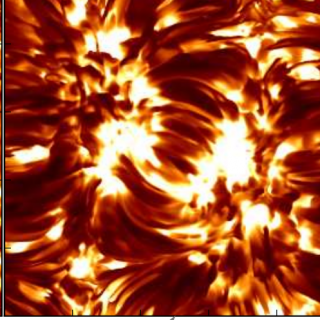Bibcode
Murabito, M.; Ermolli, I.; Giorgi, F.; Stangalini, M.; Guglielmino, S. L.; Jafarzadeh, S.; Socas-Navarro, H.; Romano, P.; Zuccarello, F.
Bibliographical reference
The Astrophysical Journal, Volume 873, Issue 2, article id. 126, 13 pp. (2019).
Advertised on:
3
2019
Journal
Citations
17
Refereed citations
15
Description
We studied the physical parameters of the penumbra in a large and fully
developed sunspot, one of the largest over the last two solar cycles, by
using full-Stokes measurements taken at the photospheric Fe I 617.3 nm
and chromospheric Ca II 854.2 nm lines with the Interferometric
Bidimensional Spectrometer. Inverting measurements with the Non-LTE
inversion COde (NICOLE) code, we obtained the three-dimensional
structure of the magnetic field in the penumbra from the bottom of the
photosphere up to the middle chromosphere. We analyzed the azimuthal and
vertical gradient of the magnetic field strength and inclination. Our
results provide new insights on the properties of the penumbral magnetic
fields in the chromosphere at atmospheric heights unexplored in previous
studies. We found signatures of the small-scale spine and intraspine
structure of both the magnetic field strength and inclination at all
investigated atmospheric heights. In particular, we report typical
peak-to-peak variations of the field strength and inclination of ≈300
G and ≈20°, respectively, in the photosphere, and of ≈200 G
and ≈10° in the chromosphere. In addition, we estimated the
vertical gradient of the magnetic field strength in the studied
penumbra: we find a value of ≈0.3 G km‑1 between the
photosphere and the middle chromosphere. Interestingly, the photospheric
magnetic field gradient changes sign from negative in the inner to
positive in the outer penumbra.
Related projects

Magnetism, Polarization and Radiative Transfer in Astrophysics
Magnetic fields pervade all astrophysical plasmas and govern most of the variability in the Universe at intermediate time scales. They are present in stars across the whole Hertzsprung-Russell diagram, in galaxies, and even perhaps in the intergalactic medium. Polarized light provides the most reliable source of information at our disposal for the
Ernest
Alsina Ballester